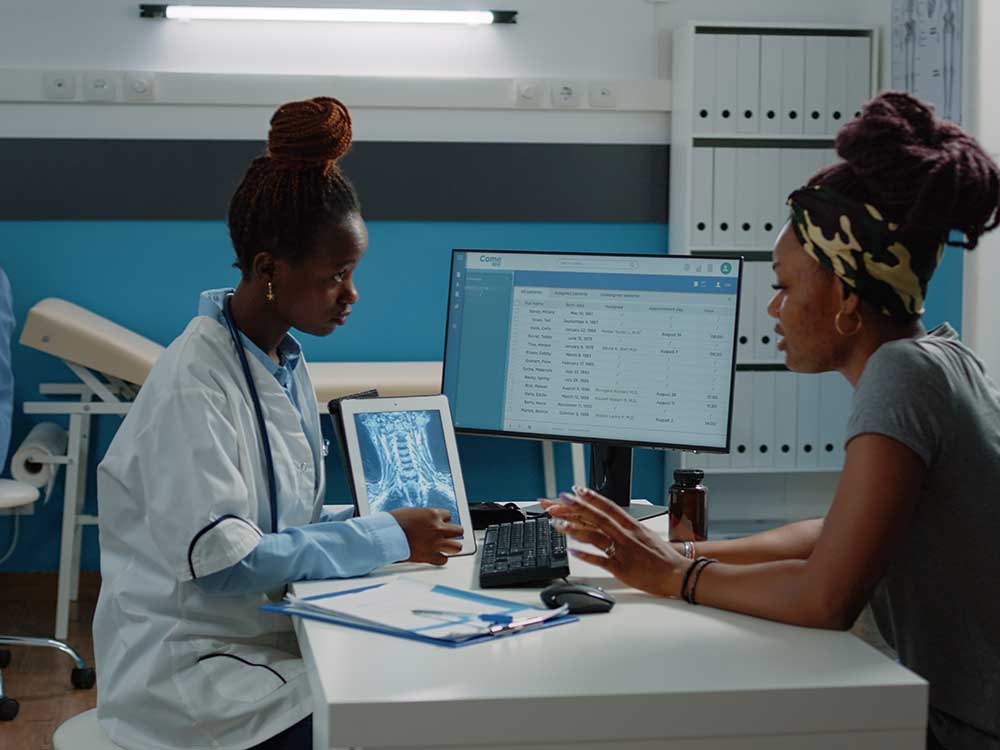The Future of Medical Administration: Fads and Technologies to View
Ideal Practices in Medical Administration for Improving Efficiency and Lowering Expenses
In the ever-evolving landscape of health care, the pursuit of finest techniques in medical administration is extremely important for boosting performance and suppressing expenditures. By integrating sophisticated modern technologies such as electronic health records and telemedicine, health care suppliers can simplify procedures and improve client treatment.
Leveraging Advanced Technology
In today's quickly progressing healthcare landscape, leveraging sophisticated modern technology is no longer optional but vital for efficient medical management. The integration of electronic solutions into health care systems has transformed the way facilities run, improving procedures and enhancing individual treatment. Electronic Health And Wellness Records (EHRs) are crucial, offering thorough patient information that can be accessed promptly by accredited workers, therefore minimizing redundancy and decreasing errors. By centralizing person info, EHRs get rid of the need for difficult documents and facilitate seamless interaction amongst doctor.
Telemedicine is one more technological development that has changed person communication. It supplies comfort for both clients and medical care professionals by enabling remote examinations, which can reduce the need for in-person brows through and enhance consultation scheduling. Furthermore, telehealth systems can extend medical care accessibility to rural or underserved areas, connecting gaps in care shipment.
Additionally, using Artificial Knowledge (AI) and artificial intelligence is becoming increasingly common in anticipating analytics, enabling very early detection of prospective health problems and more informed decision-making. These technologies, when integrated properly, can enhance diagnostic accuracy and personalize individual treatment strategies, ultimately resulting in improved medical care results and functional performance.
Optimizing Source Allocation
Reliable resource appropriation is vital for making the most of the efficiency of medical administration. By purposefully managing sources such as employees, devices, and funds, healthcare facilities can substantially boost their operational performance, enhance individual end results, and lower unneeded expenditures. The very first step in maximizing source allocation involves performing an extensive evaluation of present assets and identifying areas where sources might be underutilized or exhausted. This analysis needs to be data-driven, utilizing metrics and analytics to inform decision-making processes.
Focusing on source allowance based on person demands and solution demands is vital. Implementing versatile staffing designs can additionally optimize labor resources by changing workers allotment in action to rising and fall patient volumes.
Economic resources ought to be carefully kept track of and designated with tactical insight to sustain both temporary operational demands and long-term institutional objectives. This consists of investing in training programs that improve team competencies and adopting energy-efficient methods that decrease operational costs (medical administration). Inevitably, a maximized source allowance technique promotes a sustainable healthcare atmosphere that is responsive, efficient, and financially sensible
Streamlining Operations Processes
When medical care facilities aim to enhance functional efficiency, streamlining workflow procedures ends up being a critical focus. Reliable workflows decrease redundancy, remove unnecessary steps, and enhance sychronisation amongst health care professionals. This strategy not only accelerates solution distribution yet likewise enhances the high quality of client care.

Following, modern technology integration plays a significant function in enhancing operations. Carrying out digital wellness documents (EHRs) and electronic doctor order entrance (CPOE) systems decreases documentation, reduces human mistake, and ensures info is available to all relevant workers. Furthermore, leveraging telemedicine systems can enhance special info patient consultations and follow-ups, minimizing the pressure on physical infrastructure.

Eventually, streamlined process cause cost decreases and improved patient satisfaction, cultivating a more sustainable healthcare atmosphere.
Enhancing Data Administration
Building upon streamlined process, maximizing information management becomes an important element ahead of time medical care management. Efficient data administration systems are vital for preserving exact patient records, improving decision-making, and ensuring conformity with regulative requirements. By applying robust data administration options, health care facilities can improve the top quality of client treatment while all at once lowering operational costs.
One trick aspect of boosting information administration is the combination of advanced digital wellness document (EHR) systems. These systems assist in the seamless exchange of person details across various departments, minimizing duplication of tests and decreasing mistakes. A properly designed EHR system sustains data analytics, allowing healthcare suppliers to determine trends and make notified choices concerning patient care.
Furthermore, protecting client information is critical. Taking on thorough cybersecurity actions, including security and regular audits, guarantees the stability and discretion of delicate details. This not just protects individuals however likewise preserves the organization's reputation.
Buying team training is one more important aspect. Informing healthcare professionals on information management techniques enhances their ability to efficiently use modern technology, leading to boosted client outcomes. In conclusion, enhancing data administration via advanced innovation and extensive training is crucial for accomplishing effectiveness and cost reduction in medical management.
Fostering Collaborative Interaction
A critical component in progressing medical management is cultivating collective communication among medical care specialists. Effective communication is vital for ensuring smooth person care, enhancing therapy results, and decreasing mistakes. By encouraging open dialogue and control throughout multidisciplinary teams, healthcare companies can boost their operational efficiency and lower unneeded costs.
Central to this technique is the integration of interaction modern technologies such as digital wellness documents (EHRs) and safe and secure messaging systems, which promote the fast exchange of important person information. These devices enable health care suppliers to access and share information in real time, making sure that all staff member are informed and aligned in their decision-making processes. Regular team meetings and interdisciplinary rounds can further promote a culture of collaboration and responsibility.
Training programs concentrated on improving interaction skills are additionally necessary. These programs can help staff create the capacity to communicate info plainly and pay attention proactively, therefore minimizing misconceptions and promoting an encouraging workplace. On top of that, adopting standardized interaction methods, such as SBAR (Circumstance, History, Assessment, Suggestion), can enhance the exchange of details, ensuring that vital information are shared succinctly and successfully. Ultimately, cultivating collaborative interaction results in enhanced medical care shipment and cost financial savings (medical administration).

Verdict
Including innovative modern technology, such as electronic health and wellness records and telemedicine, alongside enhanced resource allocation and structured operations procedures, is important for boosting performance in clinical administration. Effective information management and cultivating collective interaction read the full info here amongst healthcare teams are essential for decreasing redundancies and improving treatment high quality. By prioritizing preventive treatment and taking part in top quality improvement efforts, medical care organizations can accomplish considerable cost savings and enhanced patient results, thereby ensuring sustainable healthcare distribution in a significantly intricate atmosphere.